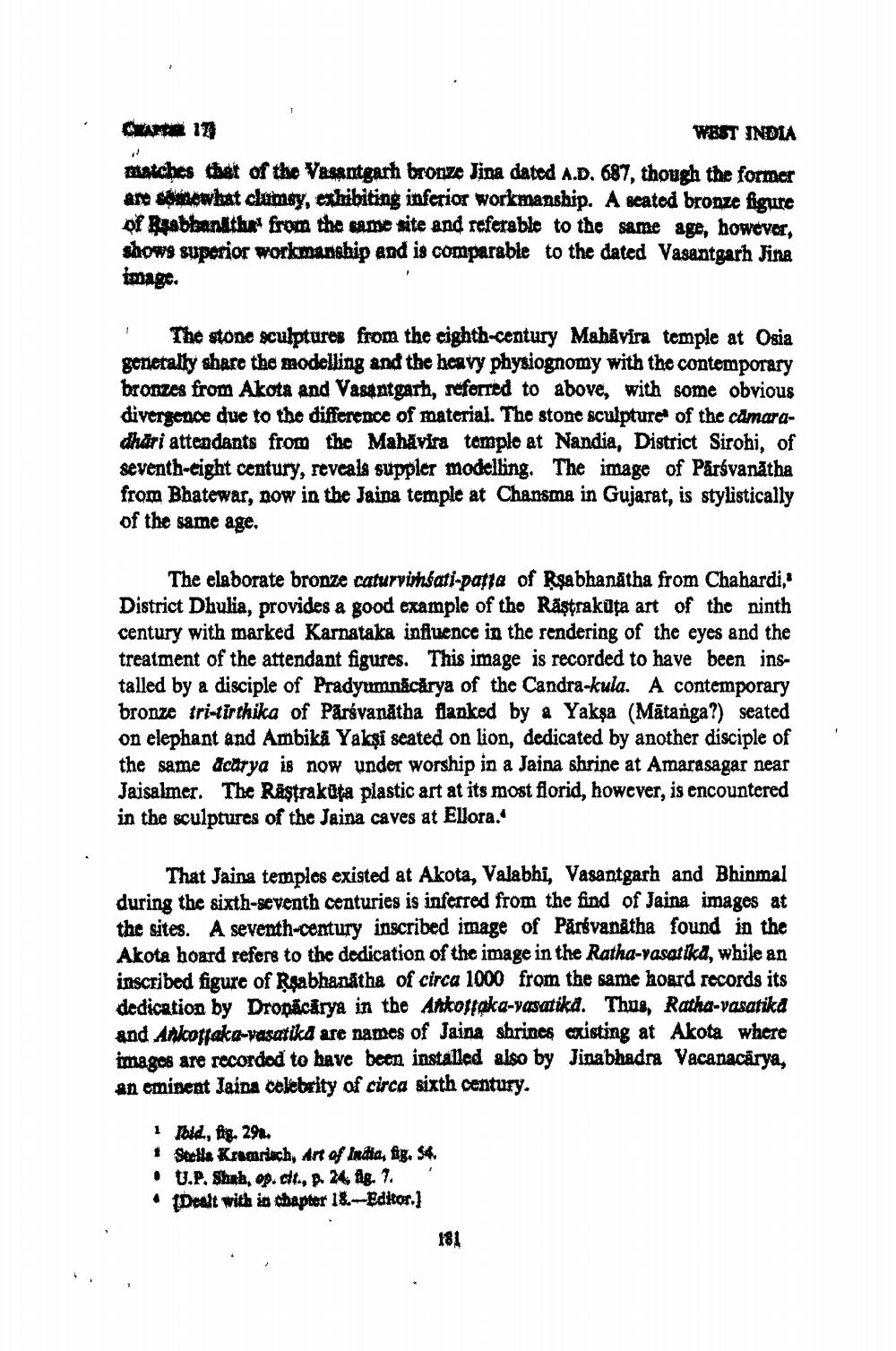________________
CHAPTER 17
WEST INDIA
matches that of the Vasantgarh bronze Jina dated A.D. 687, though the former are somewhat clumsy, exhibiting inferior workmanship. A seated bronze figure of Rabbanitha from the same site and referable to the same age, however, shows superior workmanship and is comparable to the dated Vasantgarh Jina image.
"
1
The stone sculptures from the eighth-century Mahavira temple at Osia generally share the modelling and the heavy physiognomy with the contemporary bronzes from Akota and Vasantgarh, referred to above, with some obvious divergence due to the difference of material. The stone sculpture of the camaradhari attendants from the Mahavira temple at Nandia, District Sirohi, of seventh-eight century, reveals suppler modelling. The image of Pärsvanatha from Bhatewar, now in the Jaina temple at Chansma in Gujarat, is stylistically of the same age.
The elaborate bronze caturviśati-patta of Rsabhanatha from Chahardi,' District Dhulia, provides a good example of the Rästrakuta art of the ninth century with marked Karnataka influence in the rendering of the eyes and the treatment of the attendant figures. This image is recorded to have been installed by a disciple of Pradyumnacarya of the Candra-kula. A contemporary bronze tri-tirthika of Paravanatha flanked by a Yaksa (Matanga?) seated on elephant and Ambika Yakṣi seated on lion, dedicated by another disciple of the same acarya is now under worship in a Jaina shrine at Amarasagar near Jaisalmer. The Rāştrakūta plastic art at its most florid, however, is encountered in the sculptures of the Jaina caves at Ellora.'
That Jaina temples existed at Akota, Valabhi, Vasantgarh and Bhinmal during the sixth-seventh centuries is inferred from the find of Jaina images at the sites. A seventh-century inscribed image of Parsvanatha found in the Akota hoard refers to the dedication of the image in the Ratha-vasatika, while an inscribed figure of Rsabhanatha of circa 1000 from the same hoard records its dedication by Dropacārya in the Ankottaka-vasatika. Thus, Ratha-vasatika and Ankottaka-vasatika are names of Jaina shrines existing at Akota where images are recorded to have been installed also by Jinabhadra Vacanacārya, an eminent Jaina celebrity of circa sixth century.
1 Ibid., fig. 298.
* Stella Kramrisch, Art of India, fig. 54.
⚫U.P. Shah, op. cit., p. 24, fig. 7. • [Dealt with in chapter 18.-Editor.]
181




